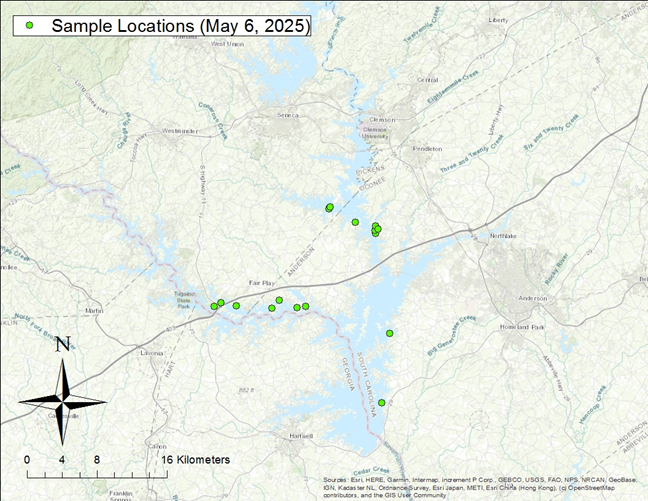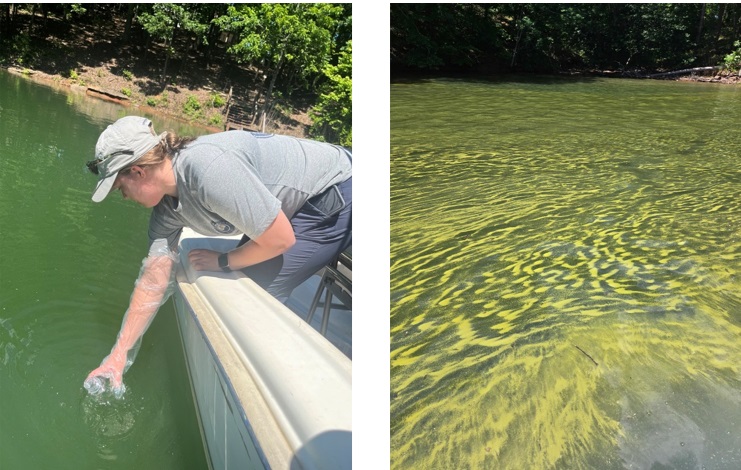SCDES Collects Additional Samples, Provides Update on Lake Hartwell Harmful Algal Bloom
Recreational Water Watch for Lake Hartwell remains in effect
FOR IMMEDIATE RELEASE:
May 8, 2025
COLUMBIA, S.C. — The South Carolina Department of Environmental Services (SCDES) continues to monitor the harmful algal bloom (HAB) on Lake Hartwell in order to provide the latest recommendations for protecting public health. HABs are a common and natural occurrence in natural waterbodies, but they can cause health impacts to people or pets that come into contact with the algae.
On May 6, Aquatic Science Division teams collected new water samples from 16 different locations around the lake, as identified in the map graphic. The teams also documented their observations of the algal bloom, which was most noticeable in coves and along the shore. SCDES’s Algal Bloom Monitoring Map has been updated with observations and sampling locations. 

The May 6 water samples indicate the continued presence of cyanobacteria (blue-green algae) capable of producing toxins. Consistent with last week’s samples, the concentration of the cyanotoxin cylindrospermopsin was below analytical detection limit in all 16 samples. Microcystins, another cyanotoxin, was detected in all 16 samples. The maximum concentration observed in this sample set was 0.65 micrograms per liter, which is below the recreational standard of 8 micrograms per liter.
Based on the latest round of lake observations and water sampling, the Recreational Water Watch for Lake Hartwell remains in effect, with the following recommendations:
- avoid direct contact with lake water in areas where the HAB is observed
- keep pets and animals from swimming in or drinking from the lake in areas where the HAB is observed
SCDES first issued a Recreational Water Watch for Lake Hartwell on April 30 after identifying the presence of a HAB. Cyanobacteria capable of producing cyanotoxins were observed in initial water samples, but cyanotoxin concentrations were low or below the analytical detection limit as they are in the most recent samples.
The most common symptoms associated with HABs are stomach pain, skin rash, headache, coughing and watery eyes.
If a pet displays symptoms after coming into contact with a HAB, please consult with your veterinarian.
SCDES will continue to monitor the Lake Hartwell HAB and communicate with local officials, stakeholders and the public. The agency is also in regular communication with the U.S. Army Corps of Engineers.
As a reminder, HABs are a common occurrence in South Carolina lakes. They are typically observed during the warmer and drier months, and they can persist for several weeks. The blooms can look like bright green spilled paint or blue-green discoloration of the water. With cooler temperatures, heavy winds, and rain, these blooms may begin to break up and die off.
For more information, contact SCDES’s Bureau of Water at 803-898-8374. If calling after hours, please leave a message that can be returned. For additional information about harmful algae in South Carolina, visit the SCDES HABs webpage and Algal Bloom Monitoring Map.
###

